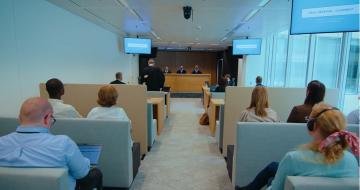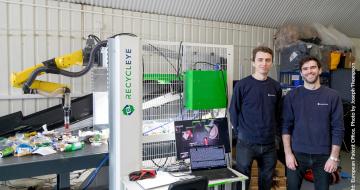Table of Contents
In some cases, the law exempts users from requesting authorisation from rights holders in order to reproduce or communicate to the public protected works.
Exceptions are, therefore, cases where it is authorised to reproduce or communicate a work to the public, without seeking the authorisation of the holders of rights in that work.
These exceptions are applicable under specific conditions. If you believe that you can avoid the need to apply for authorisation pursuant to an exception, you better verify closely that these conditions are met. If one of the conditions has not been met, the use of the work without authorisation could constitute a copyright infringement.
In some cases, the user is obliged to make a payment, sometimes collected indirectly, to compensate the right holders.
Exceptions for education and/or scientific research
- Citations of works: reproducing an excerpt from a work for the purpose of criticism or education, for example to critique a recently published book, or to reproduce an excerpt from an article in a scientific work, is authorised.
- Anthologies of works intended for teaching.
- The communication of works within the framework of school activities is permitted, such as the performance of a play by pupils as part of a French course.
- Reproduction and communication of works, to illustrate teaching or research: the illustration of a course by works to which the teaching relates, for example film extracts during a film history course, is authorised. This also extends, under certain conditions, to online or distance learning.
- The reproduction of works, such as photocopying or printing on paper (parts) of a work, is also authorised. However, scores do not fall under this exception
- The interpretation of a work during public examinations, with a view to obtaining a diploma.
Exceptions for libraries, museums and archives
- Consulting works on library or museum terminals: libraries may allow their visitors to consult a number of works on microfilm or in digital form on computers or other equipment made available to them.
- Copies for the preservation of cultural and scientific heritage: libraries, archives or museums can restore works or make digital copies of works in order to preserve and conserve them for future generations;
- Orphan works, i.e. works for which the rights holder cannot be identified or located, may sometimes be used. More specifically:
- public libraries;
- educational institutions and museums;
- archives;
- repositories of cinematographic or sound heritage;
- public service broadcasters.
may under certain conditions use orphan works without requiring the authorisation of the rights holder. The purposes for which these works are intended must be listed in the law.
These organisations must conduct a diligent search for the rights holder. If they cannot find the latter, they must register it as an "orphan work" in a database.
Exceptions for private use
- Private communication of works: the dissemination of works in the private sphere, or in the family circle, is allowed, as well as in any context where the persons concerned have a close social bond, such as performing music at a private birthday party organized at home, or for the elderly who reside in a retirement home. (further information on the dissemination of music in public.)
- Private copying: making copies of works for personal use is authorised under certain conditions. Copying works by photocopying or printing on paper is also allowed, when done for personal use (Learn more about the private copy.)
Exception for reprography
Making photocopies of (parts of) works in the context of professional activities is authorised under certain conditions. (Learn more about reprography).
Exceptions for the use of information
- Citations of works to illustrate information about the work in question.
- Broadcasters may make copies of their own broadcasts, even if they include works protected by copyright.
- Reproductions of works located in a public place are authorised, if the reproduction of the work is incidental and does not constitute the main object of the reproduction. For example, a photograph of a bicycle race or a family event that features a sculpture or a building protected by copyright.
- Caricature, parody or pastiche, made for humorous purposes.
- Reports of current events relating to the work in question: a report on an exhibition of artistic works may, under certain conditions, reproduce and communicate the works in question for information purposes.
Other exceptions
- The exception for people with disabilities: the law allows works to be copied and adapted with the aim of allowing a person with a disability to have access to them. This exception applies to persons with disabilities, regardless of the type of disability.
- The exception for the blind and persons with visual or perceptual disabilities: reproduction, adaptation or any other act that is necessary to allow these persons to access a work (e.g. adaptation of a book into Braille or audio book format) is authorised by law.
- The exception for hospitals, prisons or youth care institutions: these institutions are authorised by law to copy works for the use of their residents.
- The exception for public lending: for educational and cultural purposes, libraries and media libraries may lend out works under certain conditions.
- The announcement of public exhibitions or sales of visual works may be illustrated by reproductions of the works in question.
- Temporary reproductions of works: this exception allows the temporary reproduction of works that takes place automatically in the digital environment, either when a work is used on a computer or when a work is transmitted over a network.
- The exception for panorama: this exception allows the reproduction of works of visual, graphic or architectural art intended to be permanently situated in public places (e.g. a photograph of a statue located in the street), as well as their communication to the public (e.g. sharing on social networks) provided that it takes place without commercial purpose.


